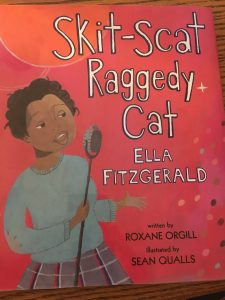
Title: Skit-Scat Raggedy Cat Ella Fitzgerald
Author: Roxane Orgill
Illustrator: Sean Qualls
Publisher and Year: Candlewick Press, 2010
Number of Pages: 38
Genre: Biography
Analysis: Skit-Scat Raggedy Cat Ella Fitzgerald is a biography about Ella Fitzgerald and her swing dancing and singing career. The book goes through a timeline of events throughout her life, some that were challenging, some that were joyful, but all ending with success.
This book could function as a window for many people who are not sure of who Ella Fitzgerald is. Throughout the book the audience can learn about Ella Fitzgerald as a person, her career, success, family and much more. Not only can this book function as a window, but it can also function as a mirror for African American young girls who love singing and dancing. After reading this book, young girls can feel encouraged to continue pursuing their passion like Ella did. Young girls may feel exhilarated or confident after reading about Ella’s success singing and dancing.
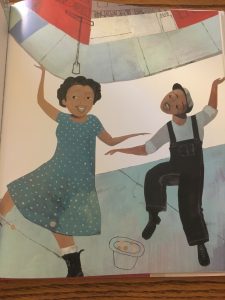
Perceptually, this book has an entertaining and engaging front cover along with a fun title that children will enjoy reading because of the phonics. Initially, the audience is not able to tell that the book is also about dancing, one may simply think that this book is only about singing. While first seeing the front cover, the reader may think that this book is fiction and not a true story about Ella Fitzgerald. It isn’t until reading the first few pages that the true story begins to emerge.
Structurally, there are a lot of words per page resulting in the reading of each page being quite lengthy. However, the author is sharing a lot of information about Ella Fitzgerald. The images throughout the book are unframed, allowing the audience to feel included in the action and connected with Ella Fitzgerald as a book character. Throughout the book, the illustrator portrays a variety of facial expressions, which are understandable to all audiences. The audience can connect with Ella and her story while reading the book because of the true story and connections that can be made throughout the book.
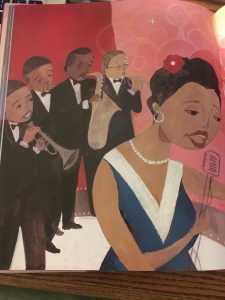
Skit-Scat Raggedy Cat Ella Fitzgerald ideologically portrays a positive message for young girls, however, there is also a negative lesson. First, the story of Ella Fitzgerald and all of her hard work and success can be inspirational for all girls. This book can teach girls to never give up on their dreams because with hard work they can be successful in whatever they do. A negative lesson seen in the book is that Ella disobeyed the law multiple times resulting in her being sent to a school for orphans. Reading this book, children can understand that even though Ella disobeyed the law she was still very successful.

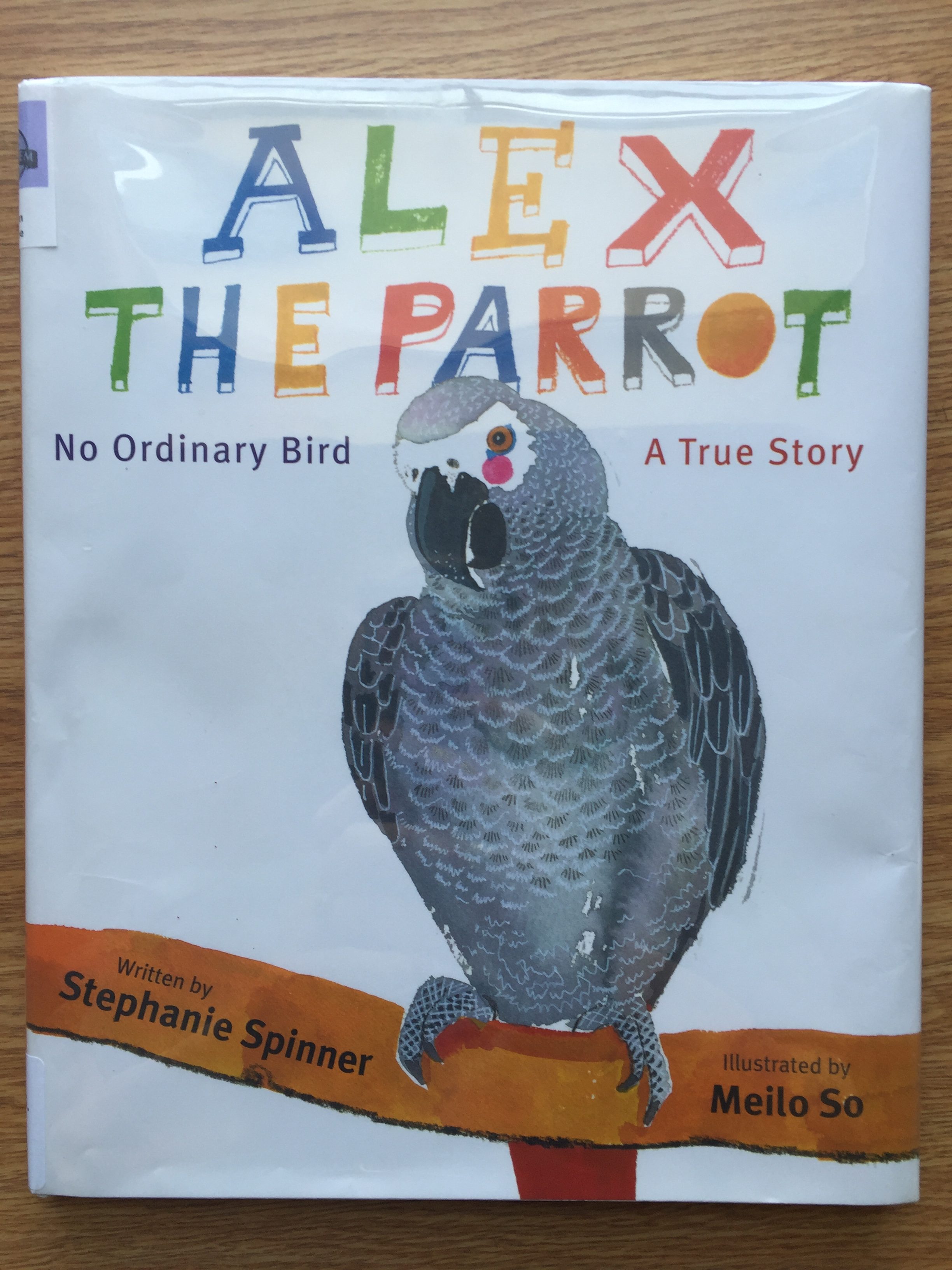

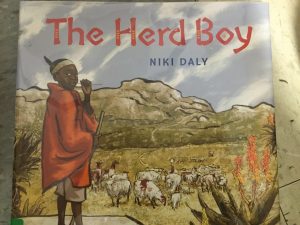
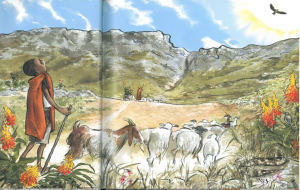
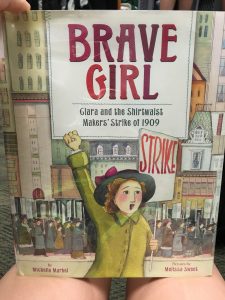 Author: Michelle Markel
Author: Michelle Markel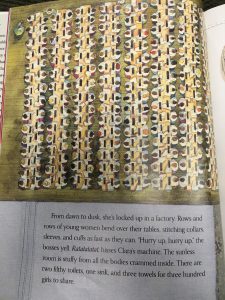 r example, when Clara arrives in America on the boat, the illustrator included an image of the long line of people waiting on the boat for their new life in America. The text is displayed on a stitched piece of fabric that connects to the main theme of the story very well. The pictures are often sewn into the text, making them resemble a quilt. Clara is often found looking or moving to the right of the page, signifying the change that is going to happen. The author uses many adjectives that emphasize the struggles Clara and her colleagues faced. For example, when Clara first arrives, the author introduces her as dirt poor and five feet tall. Ideologically, this story has many things that children can take away after reading. First and foremost, this book gives the students a historical look into the life of immigrants, especially those of women. This book focuses on the hardships and challenges that Clara faced with work and learning to speak English. Secondly, it shows students how important it is to stand up for what they know is right. If Clara were not to stand up for what she believed was right, many workers would have suffered for a longer period of time. Even after Clara faced many arrests, beatings, and threats to be fired, she kept the fight for her rights alive. It proves that determination and perseverance can lead to change for what is right. At the end of the book, readers are introduced to more information about the garment industry that can further their understanding on the topic.
r example, when Clara arrives in America on the boat, the illustrator included an image of the long line of people waiting on the boat for their new life in America. The text is displayed on a stitched piece of fabric that connects to the main theme of the story very well. The pictures are often sewn into the text, making them resemble a quilt. Clara is often found looking or moving to the right of the page, signifying the change that is going to happen. The author uses many adjectives that emphasize the struggles Clara and her colleagues faced. For example, when Clara first arrives, the author introduces her as dirt poor and five feet tall. Ideologically, this story has many things that children can take away after reading. First and foremost, this book gives the students a historical look into the life of immigrants, especially those of women. This book focuses on the hardships and challenges that Clara faced with work and learning to speak English. Secondly, it shows students how important it is to stand up for what they know is right. If Clara were not to stand up for what she believed was right, many workers would have suffered for a longer period of time. Even after Clara faced many arrests, beatings, and threats to be fired, she kept the fight for her rights alive. It proves that determination and perseverance can lead to change for what is right. At the end of the book, readers are introduced to more information about the garment industry that can further their understanding on the topic.